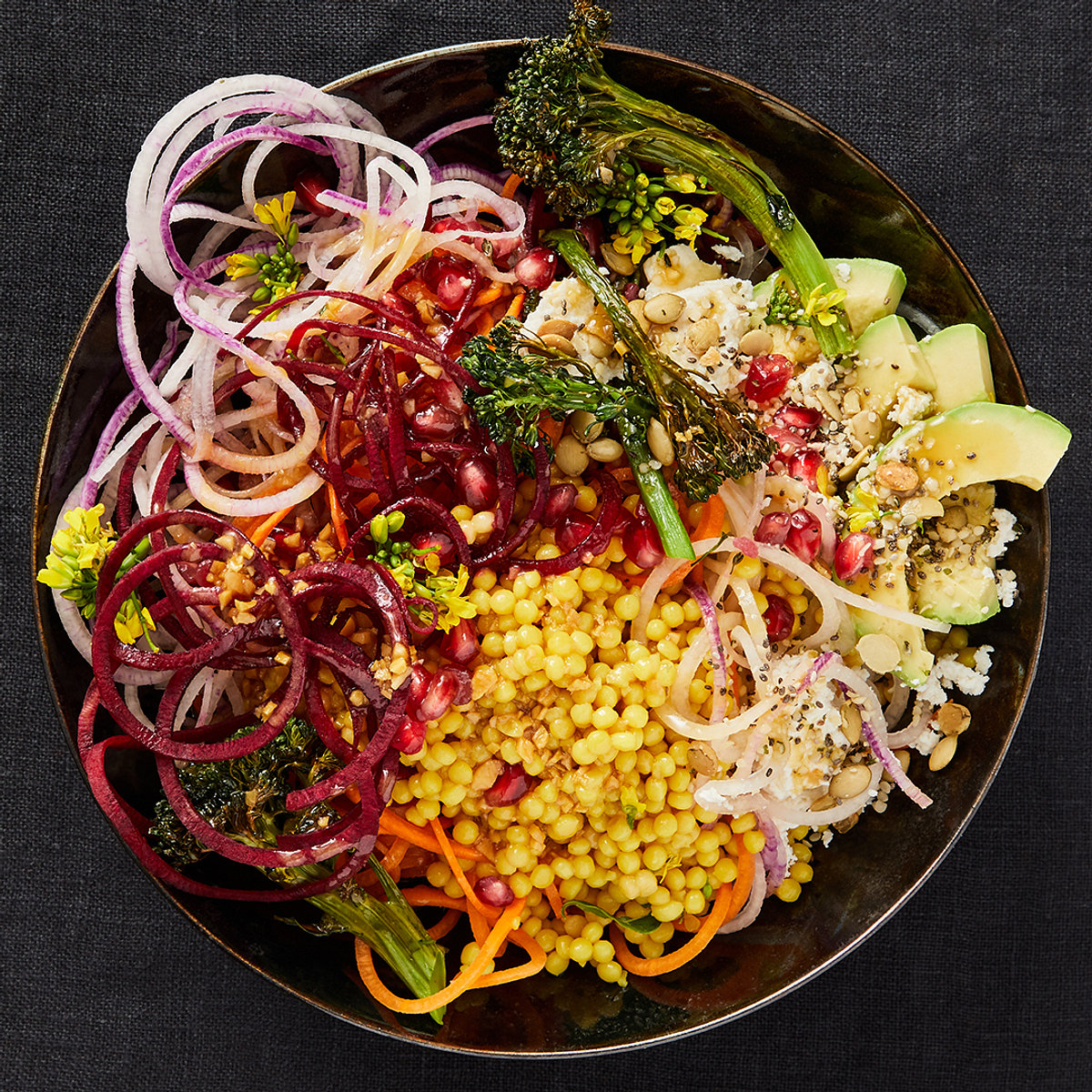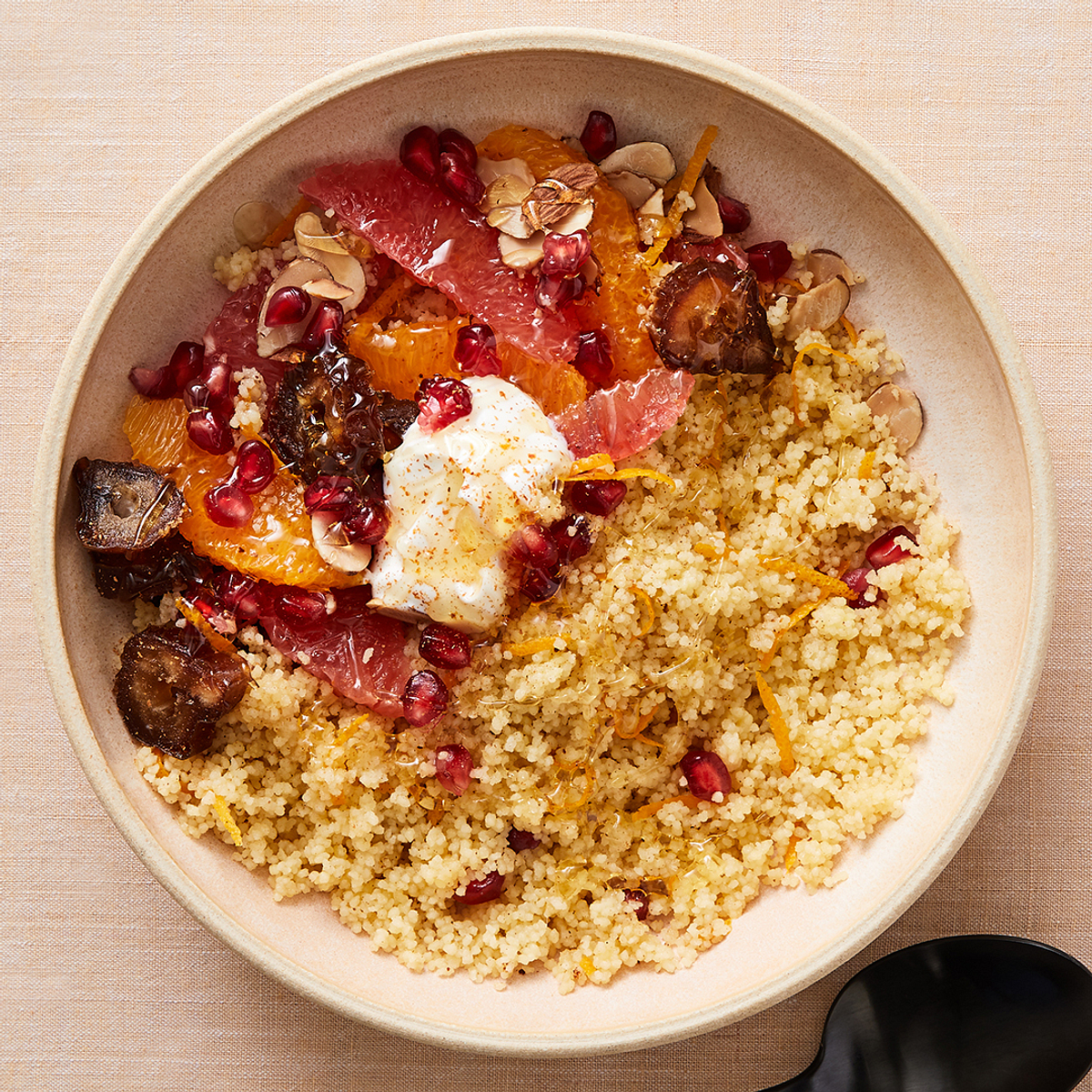In the vast world of global cuisines, the ancient art of fermenting food is present in cultures on almost every continent. While historically this method may have been for survival and preservation, nowadays we’ve come to realize that it also brings a new world of flavor with sweet, sour and even umami tastes!
Recently, I’ve been incorporating more and more fermented foods into my meals and today I’m going to share some of my absolute favorites with the help of RiceSelect® to create a balanced dish. If you’re curious to learn more about different fermented foods from yogurt to kimchi, follow along with me to learn how you can incorporate more into your meals with recipe inspiration.
What are Fermented Foods?
When it comes to using new ingredients, I love to find out the origin of where it came from, why it is grown or processed in different areas, and what it might mean for a meal in terms of taste or texture. Of course, there are thousands of different fermented foods you may be already familiar with, from sourdough bread all the way to rice wine vinegar. However, I have always wondered what qualifies as fermented food?
Simply put, fermentation occurs when microorganisms like bacteria or yeast convert starches and sugars in food into alcohol, lactic acid, carbon dioxide and other compounds. These live microorganisms are called probiotics, which many often rave about for their supposed benefits for meals. When mentioning bacteria, I’d like to clarify that these are not harmful bacterias but natural ones needed in the gut.
Different fermented foods can be easily found at grocery stores, supermarkets and farmer’s markets! To enjoy the most flavor, I suggest that you eat them on their own or add them into meals without cooking them further. So let’s take a look at some of the most common, including soy, dairy, produce and even tea.
Fermented Soybeans
Most commonly found in Asian countries such as Japan, China and Indonesia. Examples of fermented soybeans include natto, tempeh, miso and soy sauce.
Tempeh: Many use tempeh for meat-free substitutes as it offers an earthy and savory taste with a chewy and nutty texture. I use it anywhere I would ground or sliced meats.
Natto: With a nutty taste and subtle aroma of coffee beans, natto is perfect for adding into salads like this shrimp salad recipe, soups, rice bowls or even nice Pearl Couscous recipes for a rich protein punch.
Miso: Widely used in Japan and around the world as a seasoning, miso is great for enhancing the flavor of soups, dressings and other sauces. Miso may come in different colors and flavors ranging from white, which is mild and sweet, to red with a pungent and bold taste. One of my favorite recipes to use white miso is in contrast to Premium Black Rice in this Miso Black Rice Bowl made with a homemade umami dressing!
Soy Sauce: A staple in recipes like fried rice, soy sauce is actually made from the paste of fermented soybeans! Use it to prepare a gourmet Jasmati® fried rice like this Japanese Omurice recipe.
Fermented Fruits and Vegetables
Used all over the world from Asia to Europe and beyond, fermented fruits and vegetables are arguably the most common form of fermented food eaten! A few of my favorites include sauerkraut, pickles, kimchi and Gochujang.
Sauerkraut: This fermented cabbage is perfect for adding to soups, stews, alongside sausage, fish and layered in sandwiches.
Pickles: Often referring to pickled cucumbers that have been brined and left to ferment, the term pickle can be generally used to marinate many other fruits and vegetables. However, that does not mean they are necessarily fermented, make your own homemade fermented pickles and other vegetables or read the label carefully at the store. For your next grill out, prepare a Grilled Veggie Burger with multi-grain Royal Blend® and top with fermented pickles!
Kimchi: This Korean staple of salted and fermented vegetables like napa cabbage and Korean radish is growing rapidly and can be used in a wide variety of rice or orzo bowls, side dishes and even meals like this Kimchi Fried Rice with Filipino Pork Sisig.
Gochujang: Also very typical in Korean cuisine, this red chili paste is a savory, sweet, and spicy fermented condiment used similar to other hot sauces like sriracha. It makes a wonderful addition to recipes like these Korean Beef Rice Bowls.
Apple Cider Vinegar: Also known as cider vinegar, this is a vinegar made from fermented apple juice! It can be used anywhere that traditional vinegar can be in dressings, sauces and more. Try it in a wonderfully vibrant Couscous Glow Bowl.
Fermented Dairy
While there are many different types of milk available nowadays from coconut to oat milk, the real taste and tested benefits come from fermented cow’s milk in the form of yogurt and kefir!
What’s the difference between yogurt and kefir?
If you’ve ever seen both at the grocery store, to the untrained eye they might look like two different types of creamy yogurt. However, while both are made from fermented milk, yogurt tends to be a bit thicker, sweeter and creamier whereas kefir is a more drinkable beverage with a bit more sour taste.
And, while they may differ in their process, they can often be used interchangeably in meals. I would suggest using yogurt for a dollop on top of your Breakfast Couscous with Orange and Dates, while kefir might be better suited as a substitute in dressings and smoothies such as a Green Goddess dressing or an Arborio Rice recipe.
Note: To get the most fermentation benefits from my yogurt or kefir, I always make sure that they include “Live and Active Culture” on the back or somewhere on the label.
Bonus Fermented Items
While there are myriad other fermented items that can be enjoyed, two notable foods that don’t quite fit into common categories include fish sauce and kombucha.
Fish sauce is a liquid condiment that adds umami, earthy and savory flavors to meals made from fish or krill that have been salted and fermented. This sauce is typical in East Asian cuisine like a Vietnamese Jasmine Rice Porridge with Chicken Chao Ga. For incredibly flavorful results, I always use intensely fragrant Kamalis™Jasmine Rice, exclusively from RiceSelect!
Kombucha, on the other hand, is a sweetened and fermented black or green tea. It offers a fizzy and tart flavor that often has juice, spices, fruit or other flavorings added.
Try something new like fermenting your own foods at home to enjoy balanced meals with your favorite RiceSelect variety! Find more meal ideas and inspiration in the recipe section.



